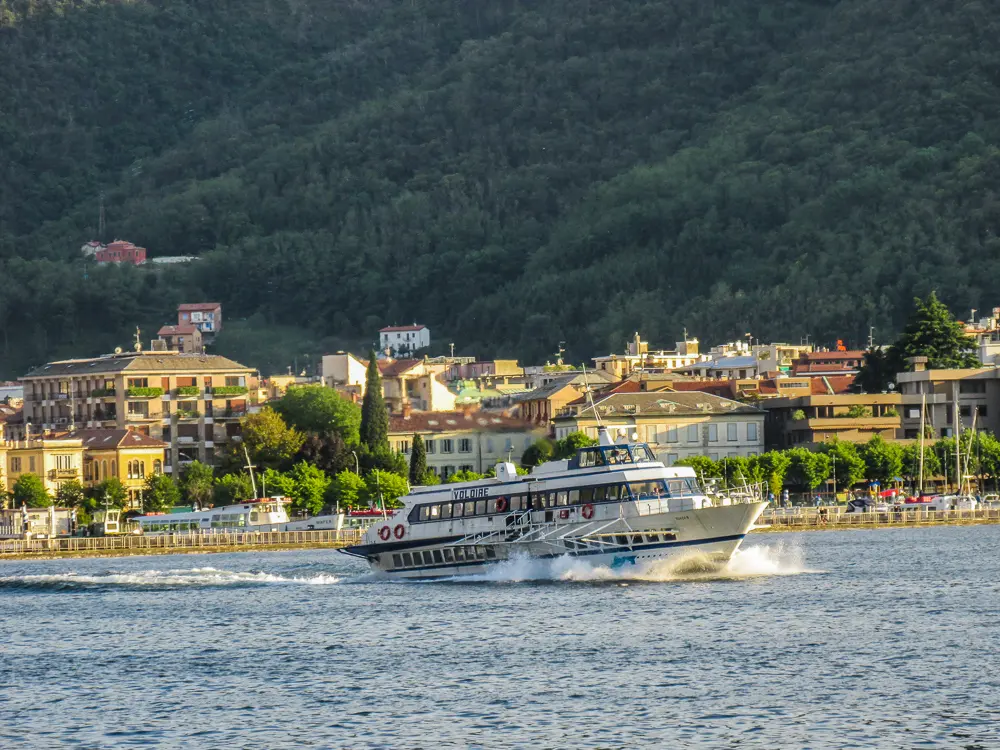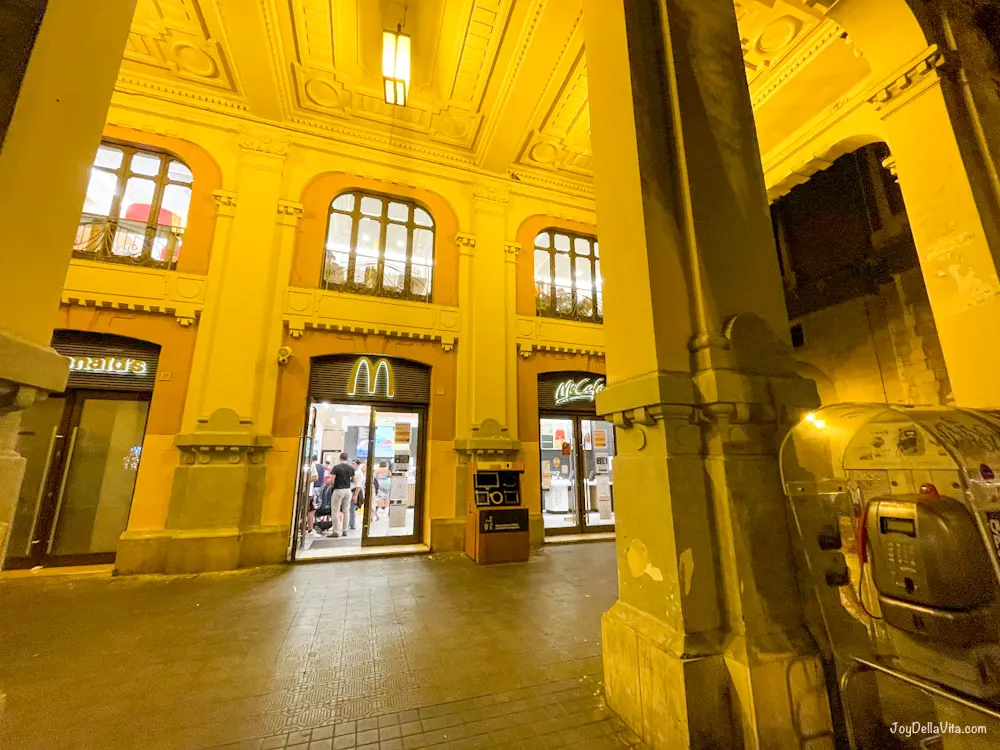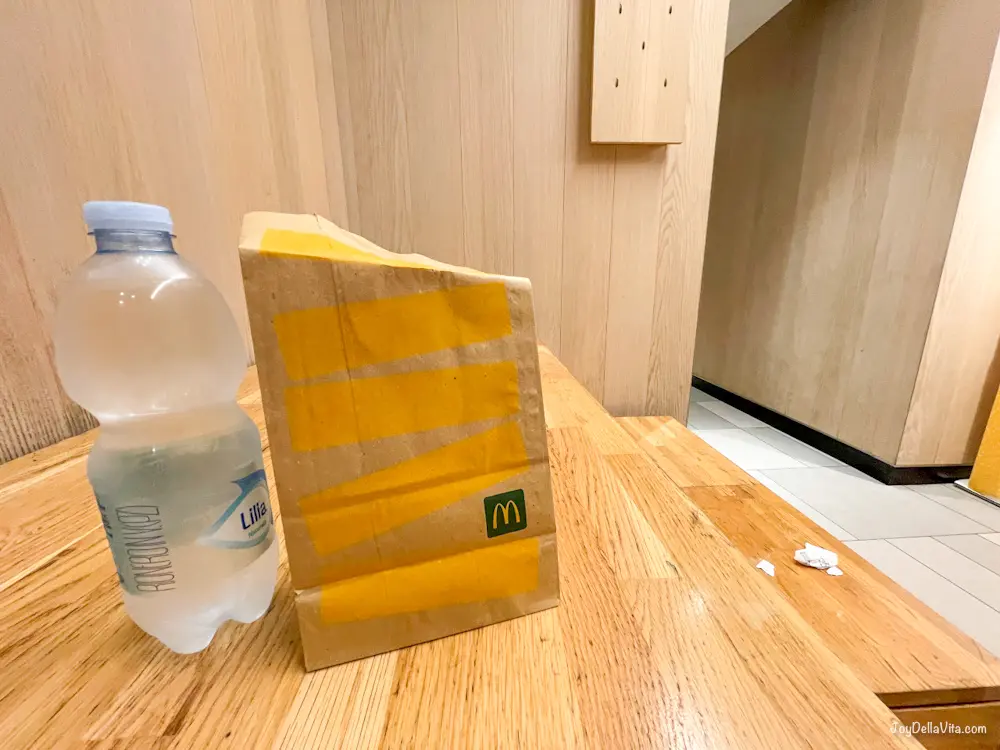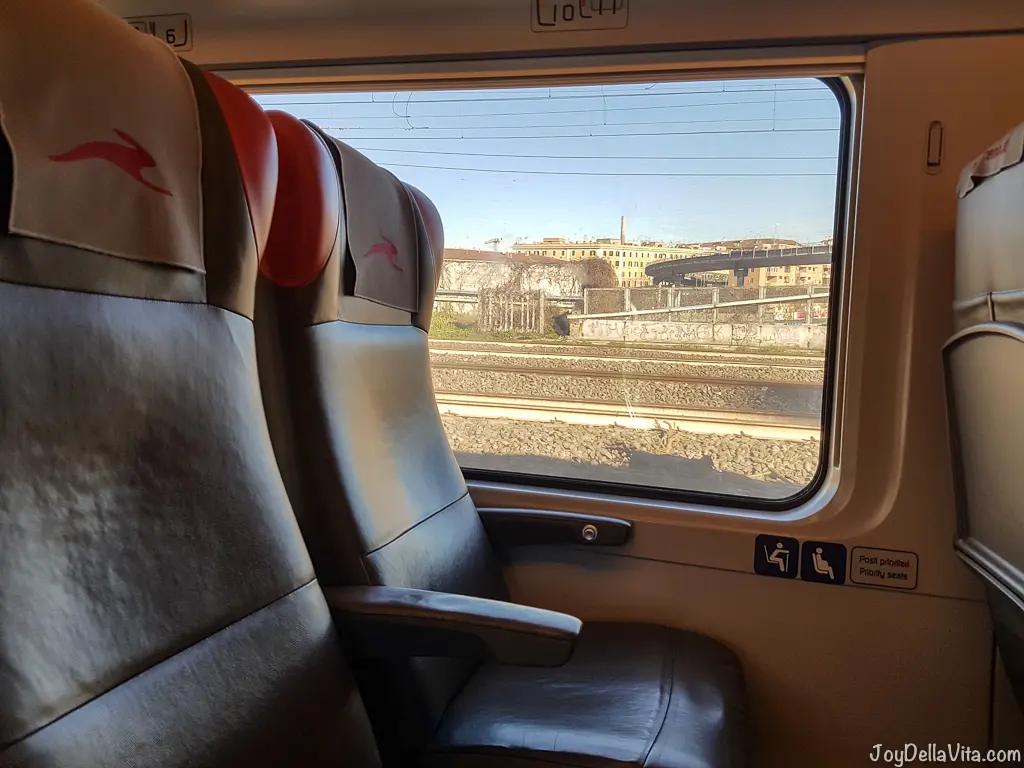The day I saw a hydrofoil for the first time I was walking along the shore in Como on Lake Como, after a very tasty dinner. Enjoying the sunset and the last warm rays of the sun, watching some small boats here and there, but then I heard a quite loud and muffled noise. A little earlier in the evening I had already heard a similar noise, but this came from a plane taking off on the water, but this time I look north from the harbour and see a previously unknown object passing by on the water. Of course, I immediately pulled out my camera. At first, it was still approaching at high speed with a strong swirling of the water behind it. WHAT IS THAT? It sank and swam the last metres, in comparison, really inconspicuous and like a normal ship or boat into the harbour of Como.
I walk on and a short time later I see the same boat sailing towards the sunset again. Out of the harbour area again, it steps on the gas and lifts off again. The noise, besides the splashing of the water, gets louder and the odd boat leaves my visual range. I had to go back to my Hotel room to consult google, to finally find out what kind of boat I have just witnessed on Lake Como. It was a so-called hydrofoil. A datasheet of the hydrofoil Aliscafo Voloire by the operator company can be found here.
What is a Hydrofoil Boat?
Hydrofoils have been around for quite a long time, even to my surprise. Already more than 100 years ago, such boats were manufactured and also used for commercial passenger transport. But how does it actually work, that the boat practically glides over the water, and is it really so much faster as a result?
A hydrofoil or hydrofoil boat is a high-speed watercraft that is lifted by means of submerged hydrofoils while travelling at increasing speed. This means that the hull no longer touches the water and the vehicle “flies” above the water surface. Since only a small part of the vehicle (hydrofoil and propeller) is then below the water surface, displacement and frictional resistance are significantly reduced. Hydrofoils can thus reach speeds of up to 48 knots (about 90 km/h).
The development of hydrofoils began around 1900, although there were already ideas about them before then. Shortly after 1900, the Italian airship designer Enrico Forlanini (1848-1930) was engaged in the development of flying boats. This resulted in the first operational hydrofoil, constructed in 1906, of which he is generally regarded as the inventor. He crossed Lake Maggiore with it and reached a speed of 38 knots (about 70 km/h) with his propeller-driven hydrofoil. Due to his achievements, Milan Linate airport was named after him.
Hydrofoils are mainly used for military applications and passenger transport on rivers (for example Russia), for transfer between the mainland and islands and between groups of islands. For example, the inventor Felix Wankel tested his hydrofoils and planing boat from his Lindau development centre for a time on Lake Constance. In 1940, the Sachsenberg brothers took over a site with shipyard facilities in Harburg and built hydrofoils of various sizes from 5 to 100 tons for the navy and the army, which had been newly developed with Schertel. Further information on hydrofoils can also be found on Wikipedia.











